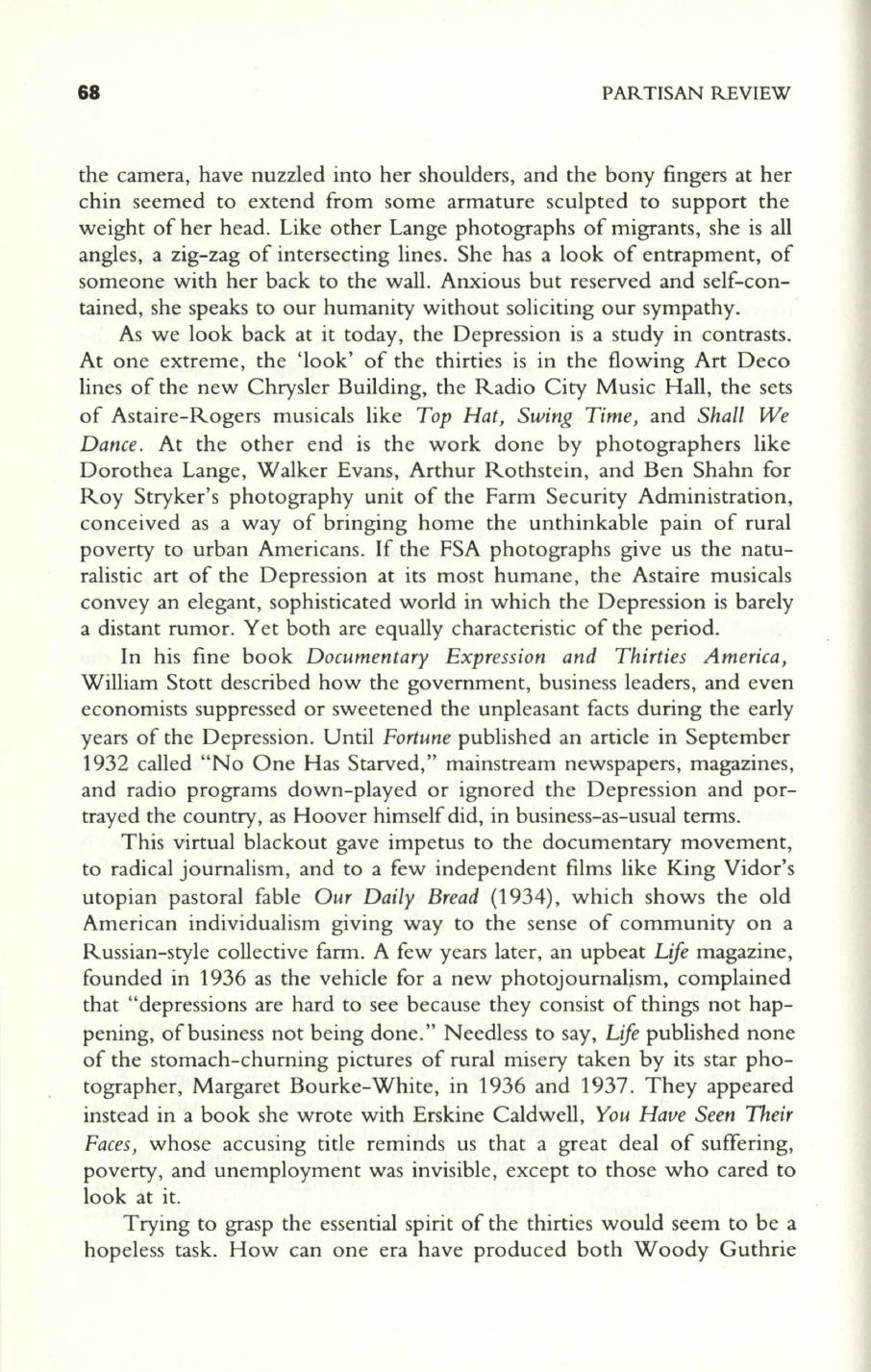
68
PARTISAN REVIEW
the camera, have nuzzled into her shoulders, and the bony fingers at her
chin seemed to extend from some armature sculpted to support the
weight of her head. Like other Lange photographs of migrants, she is all
angles, a zig-zag of intersecting lines. She has a look of entrapment, of
someone with her back to the wall. Anxious but reserved and self-con–
tained, she speaks to our humanity without soliciting our sympathy.
As we look back at it today, the Depression is a study in contrasts.
At one extreme, the 'look' of the thirties is in the flowing Art Deco
lines of the new Chrysler Building, the Radio City Music Hall, the sets
of Astaire-Rogers musicals like
Top Hat, Swing Time,
and
Shall We
Dance .
At the other end is the work done by photographers like
Dorothea Lange, Walker Evans, Arthur Rothstein, and Ben Shahn for
Roy Stryker's photography unit of the Farm Security Administration,
conceived as a way of bringing home the unthinkable pain of rural
poverty to urban Americans. If the FSA photographs give us the natu–
ralistic art of the Depression at its most humane , the Astaire musicals
convey an elegant, sophisticated world in which the Depression is barely
a distant rumor. Yet both are equally characteristic of the period.
In his fine book
Documentary Expression and Thirties America,
William Stott described how the government, business leaders, and even
economists suppressed or sweetened the unpleasant facts during the early
years of the Depression . Until
Fortune
published an article in September
1932 called "No One Has Starved," mainstream newspapers, magazines,
and radio programs down-played or ignored the Depression and por–
trayed the country, as Hoover himself did, in business-as-usual terms.
This virtual blackout gave impetus to the documentary movement,
to radical journalism, and to a few independent films like King Vidor's
utopian pastoral fable
Our Daily Bread
(1934), which shows the old
American individualism giving way to the sense of community on a
Russian-style collective farm. A few years later, an upbeat
Life
magazine,
founded in 1936 as the vehicle for a new photojournalism, complained
that " depressions are hard to see because they consist of things not hap–
pening, of business not being done." Needless to say,
Life
published none
of the stomach-churning pictures of rural misery taken by its star pho–
tographer, Margaret Bourke-White, in 1936 and 1937. They appeared
instead in a book she wrote with Erskine Caldwell,
You Have Seen Their
Faces,
whose accusing title reminds us that a great deal of suffering,
poverty, and unemployment was invisible, except to those who cared to
look at it.
Trying to grasp the essential spirit of the thirties would seem to be a
hopeless task. How can one era have produced both Woody Guthrie


